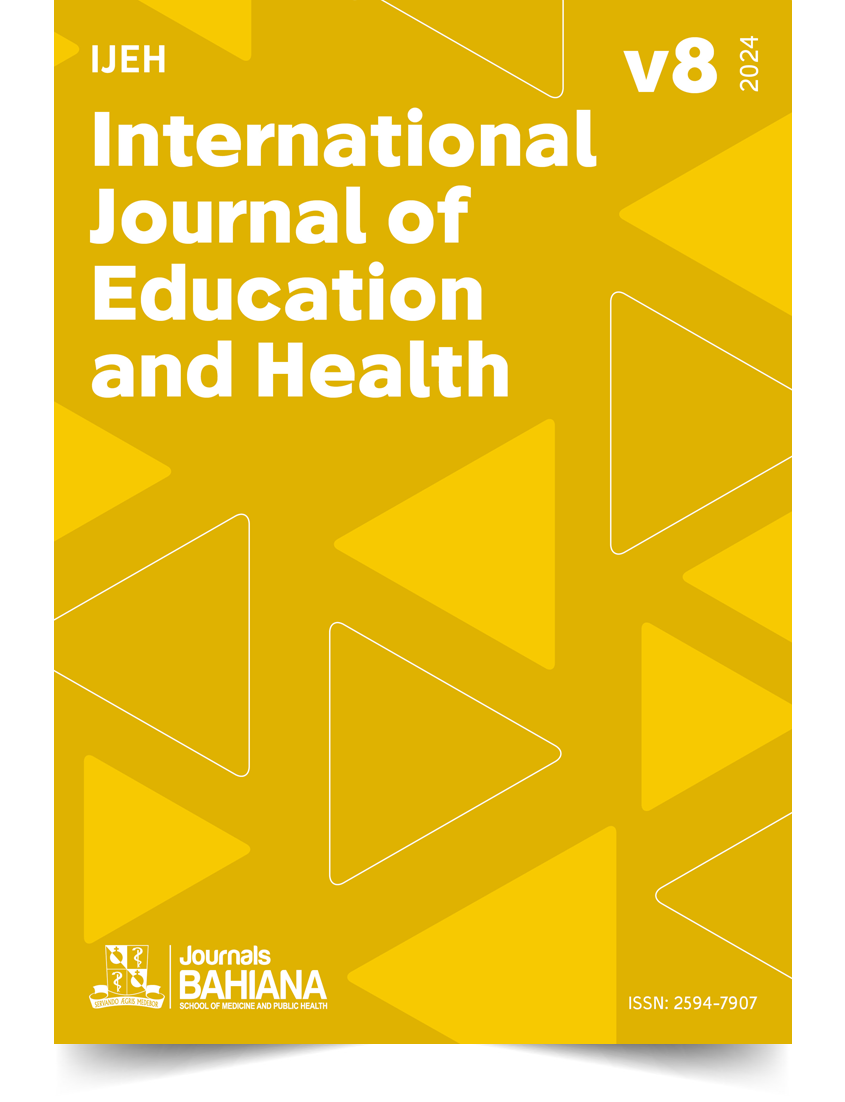Child development in medical education: a relevant knowledge
DOI:
https://doi.org/10.17267/2594-7907ijeh.2024.e5808Abstract
INTRODUCTION: Adequate developmental surveillance is fundamental for health promotion, disorder prevention and early diagnosis. For that to occur, it is necessary that doctors have vast knowledge about the theme and are able to apply it in their practice. This recommendation is supported by Brazilian legislation about health care and by the national curricular guidelines for the medical course. Nevertheless, Brazilian medical education does not seem to fulfill this objective. MATERIAL AND METHOD: Documental analysis of the curricula of medical schools, deep interviews and focal groups with doctors who work with children and adolescents about their child and adolescent development background and their thoughts on its relevance for their clinical practice. RESULTS: Of 100 curricula evaluated, only 4 had a discipline on developmental psychology. On the other hand, all doctors from the focal groups and individual interviews emphasized its importance and their lack of knowledge about it. There were no differences between the results from the focal groups and the interviews. Learning usually comes from the contact with pathological situations, without any previous reflection about normative human development. This may lead to increased risks for child and adolescent’s health and their developmental trajectories. CONCLUSION: It is necessary to pay more attention to typical child and adolescent development during medical formation.
Downloads
References
(1) Boyd D, Bee H. A criança em crescimento. Porto Alegre: Artmed; 2011.
(2) Ministério da Saúde (Brazil). Saúde da Criança: Crescimento e Desenvolvimento. Cadernos de Atenção Básica. [Internet]. Brasília: Ministério da Saúde; 2012. Available from: https://bvsms.saude.gov.br/bvs/publicacoes/saude_crianca_crescimento_desenvolvimento.pdf
(3) Ministério da Educação (Brazil). Diretrizes Curriculares Nacionais do Curso de Graduação em Medicina. [Internet]. Brasília: Ministério da Educação; 2014. Available from: http://portal.mec.gov.br/cne/arquivos/pdf/Med.pdf%0Ahttps://www.cambridge.org/core/product/identifier/S0007125000277040/type/journal_article
(4) Fox G, Katz DA, Eddins-Folensbee FF, Folensbee RW. Teaching development in undergraduate and graduate medical education. Child Adolesc Psychiatr Clin N Am. 2007;16(1):67–94. https://doi.org/10.1016/j.chc.2006.07.006
(5) Benton TD, Fritz GK, Maslow GR. Healthy Minds-Healthy Kids: Integrating Care. Child Adolesc Psychiatr Clin N Am. 2017;26(4):XV–XVI. https://doi.org/10.1016/j.chc.2017.08.001
(6) Figueiras ACM, Puccini RF, Silva EMK, Pedromônico MRM. Avaliação das práticas e conhecimentos de profissionais da atenção primária à saúde sobre vigilância do desenvolvimento infantil. Cad Saúde Pública. 2003;19(6):1691–9. https://doi.org/10.1590/S0102-311X2003000600013
(7) Almeida AC, Mendes LC, Sad IR, Ramos EG, Fonseca VM, Peixoto MVM. Use of a monitoring tool for growth and development in Brazilian children --- systematic review. Rev Paul Pediatr. 2016;34(1):122–31. https://doi.org/10.1016/j.rppede.2015.12.002
(8) Caminha MFC, Silva SL, Lima MC, Azevedo PTÁCC, Figueira MCS, Batista M. Vigilância do desenvolvimento infantil: análise da situação brasileira. Rev Paul Pediatr. 2017;35(1):102–9. https://doi.org/10.1590/1984-0462/;2017;35;1;00009
(9) Assumpção TM. Desenvolvimento infantil e formação médica [dissertação] [Internet]. São Paulo: Faculdade de Ciências Médicas da Santa Casa de São Paulo; 2023. Available from: https://fcmsantacasasp.edu.br/wp-content/uploads/2023/06/2023-Tatiana-Malheiros-Assumpcao.pdf
(10) Wilkinson R, Marmot M. Social determinants of health: the solid facts. Geneva: WHO; 2003.
(11) Hertzman C. The case for child development as a determinant of health. Can J Public Health. 1998;89(Suppl.1):16–21. https://doi.org/10.1007%2FBF03405090
(12) Xavier MJ, Roman SD, Aitken RJ, Nixon B. Transgenerational inheritance: how impacts to the epigenetic and genetic information of parents affect offspring health. Hum Reprod Update. 2019;25(5):518–40. https://doi.org/10.1093/humupd/dmz017
(13) Wadsworth M, Butterworth S. Early life. In: Marmot TM, Wilkinson RG. Social Determinants of Health. New York: Oxford University Press; 2006.
(14) Keating DP. Transformative role of epigenetics in child development research: commentary on the special section. Child Dev. 2016;87(1):135–42. https://doi.org/10.1111/cdev.12488
(15) Blane D. The life course, the social gradient, and health. In: Marmot TM, Wilkinson RG. Social Determinants of Health. New York: Oxford University Press; 2006.
(16) Krieger N. Theories for social epidemiology in the 21st century: an ecosocial perspective. Int J Epidemiol. 2001;30(4):668–77. https://doi.org/10.1093/ije/30.4.668
(17) Davies D. Child Development, Third Edition: A Practitioner’s Guide. New York, London: The Guilford Press; 2010.
(18) Canguilhem G. O Normal e o Patológico. Rio de Janeiro: Forense Universitária; 2007.
(19) Marcelli D, Cohen D. Principais fontes teóricas da psiquiatria clínica de crianças e adolescentes. In: Infância e Psicopatologia. 7a ed. Porto Alegre: Artmed; 2009.
Downloads
Published
Issue
Section
License
Copyright (c) 2024 Tatiana Malheiros Assumpção, Patrícia Martins Montanari

This work is licensed under a Creative Commons Attribution 4.0 International License.
This work is licensed under a Creative Commons Attribution 4.0 International License.



